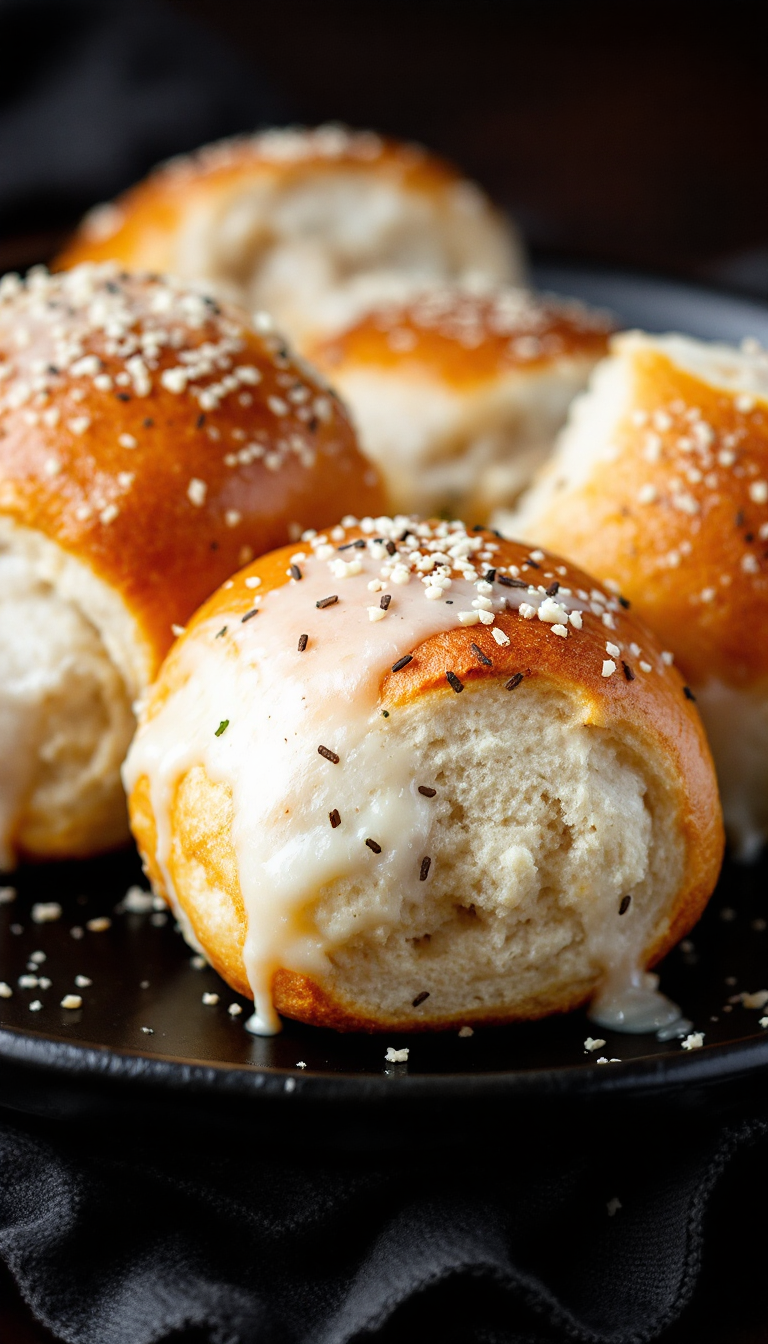
Ah, Texas Roadhouse rolls—just the thought of them makes my taste buds dance like it’s the fourth of July! Soft, buttery, and slightly sweet, these rolls are like a warm hug on a chilly day (or any day, really). I remember the first time I tried them, it was like discovering a new planet, one where carbs reign supreme and butter flows like rivers.
Steps
- Heat the milk until it almost boils, then remove it from the heat and let it cool to lukewarm. Mix the lukewarm milk with yeast and honey in a small bowl and let it sit for 5 minutes.
- In a large bowl, combine 3 tablespoons of melted butter, the milk mixture, a room-temperature egg, salt, and half of the flour. Stir slowly until smooth, then gradually add the rest of the flour until a dough forms.
- Knead the dough for about 8 minutes, then transfer it to a floured surface for a few more minutes of kneading. Place the dough in a greased bowl, cover it, and let it rise in a warm place for an hour.
- Once risen, punch down the dough and roll it out on a floured surface to ½ inch thickness. Fold the dough in half and seal gently, then cut it into 24 equal squares.
- Arrange the squares on lightly greased baking sheets, cover them, and let them rise for 30-40 minutes until doubled in size. Preheat your oven to 350°F.
- Bake the rolls for 12-15 minutes until the tops turn a light golden brown. Melt the remaining tablespoon of butter and brush it over the warm rolls before serving with honey butter if desired.

Ingredients
- 1 ¼ cups whole milk
- 2 ¼ teaspoons Active Dry Yeast (or 1 packet)
- ¼ cup honey
- 4 tablespoons melted butter, divided
- 1 large egg, at room temperature
- 1 teaspoon salt
- 4 cups (480 grams) all-purpose or bread flour
Nutritional Values
Calories: 2808 kcal | Carbohydrates: 456 g | Protein: 72 g | Fat: 48 g | Saturated Fat: 24 g | Cholesterol: 325 mg | Sodium: 2928 mg | Potassium: 648 mg | Sugar: 72 g | Vitamin A: 1080 IU | Calcium: 228 mg | Iron: 24 mg
FAQ
- Can I use a bread machine to make Texas Roadhouse Rolls?
- Yes, you can use a bread machine for this recipe. Start by scalding the milk and letting it cool to lukewarm. Then, add all ingredients to the bread machine in the order specified in the recipe and use the dough setting. Once the cycle is finished, let the dough rise in a warm spot before shaping and baking.
- How do I substitute Instant Yeast for Active Dry Yeast?
- When using Instant Yeast instead of Active Dry Yeast, use 25% less. For this recipe, that means using 1 and 3/4 teaspoons. Mix the yeast with the flour rather than adding it to the warm milk, and proceed with the recipe as directed.
- What is the best method to ensure my dough rises well?
- Dough requires a warm environment to rise properly. If your dough struggles to rise, try preheating your oven to 200°F for a couple of minutes, then turn it off and place the covered dough inside. Alternatively, place a tray of boiling water in the oven with the dough on a higher rack, or mix a fresh package of yeast with warm water and sugar to knead into the dough.
- Why is scalding milk important in this recipe?
- Scalding milk helps ensure the rolls are light and fluffy. Heating the milk to just below boiling and then cooling it down breaks down proteins that can interfere with yeast activity, allowing the dough to rise better and resulting in a softer texture.
- How should I measure flour for this recipe?
- To measure flour accurately, use a spoon to scoop the flour into your measuring cup and level it off with a knife. This prevents packing too much flour into the cup, which can make the rolls dense. Alternatively, weigh the flour using a kitchen scale—1 cup of flour should weigh 120 grams.
Tips
- Use the Right Amount of Yeast: If swapping Instant or Rapid Rise Yeast for Active Dry Yeast, use 25% less. In this recipe, that means 1 + 3/4 teaspoons. Mix the yeast with flour instead of adding it to warm milk, and skip the 5-minute wait after combining milk and honey.
- Properly Measure Your Flour: Scoop flour into your measuring cup with a spoon and level it off with a knife. Avoid dipping the cup directly into the flour to prevent dense rolls. Alternatively, you can weigh the flour—1 cup of all-purpose or bread flour should weigh 120 grams.
- Make-Ahead Options: For convenience, prepare the dough and let it rise, then shape the rolls and refrigerate them overnight. Alternatively, you can bake them lightly and store them until ready to serve, or freeze unbaked rolls and let them rise before baking.
- Create a Warm Environment for Rising: If your dough isn’t rising well, preheat your oven to 200°F for 2 minutes, shut it off, and place the covered dough inside to rise. Another method is placing a tray of boiling water on the bottom oven rack with the dough above to create a warm environment.
Equipment
- Bread Machine (optional, but useful if you prefer not to make the dough by hand)
- Mixer with Dough Hook (optional, but useful for mixing the dough)
- Rolling Pin (for rolling out the dough)
- Baking Sheets (lightly colored, for baking the rolls)
- Cooking Spray (for greasing bowls and baking sheets)
- Kitchen Scale (optional, for weighing flour accurately)